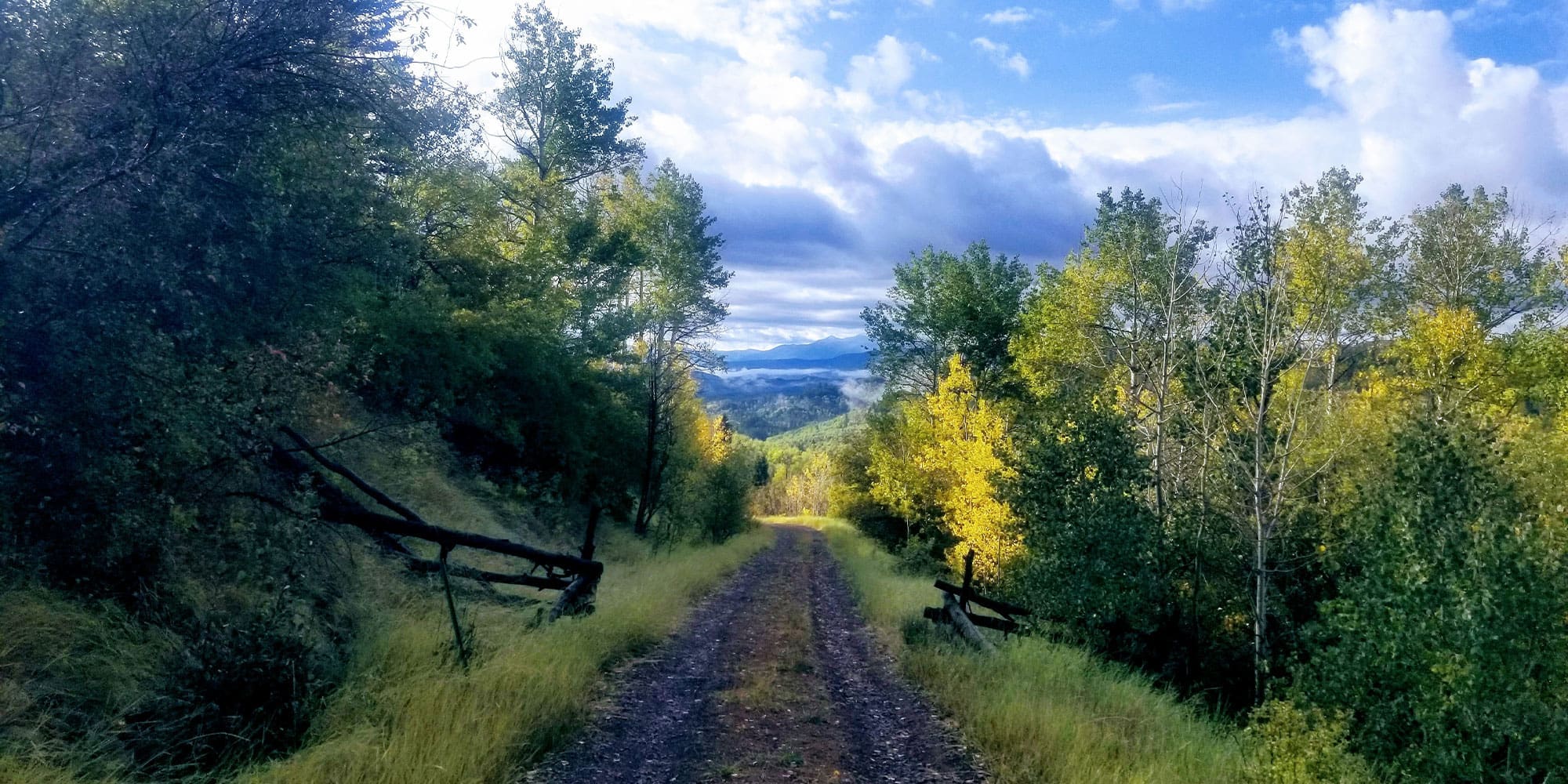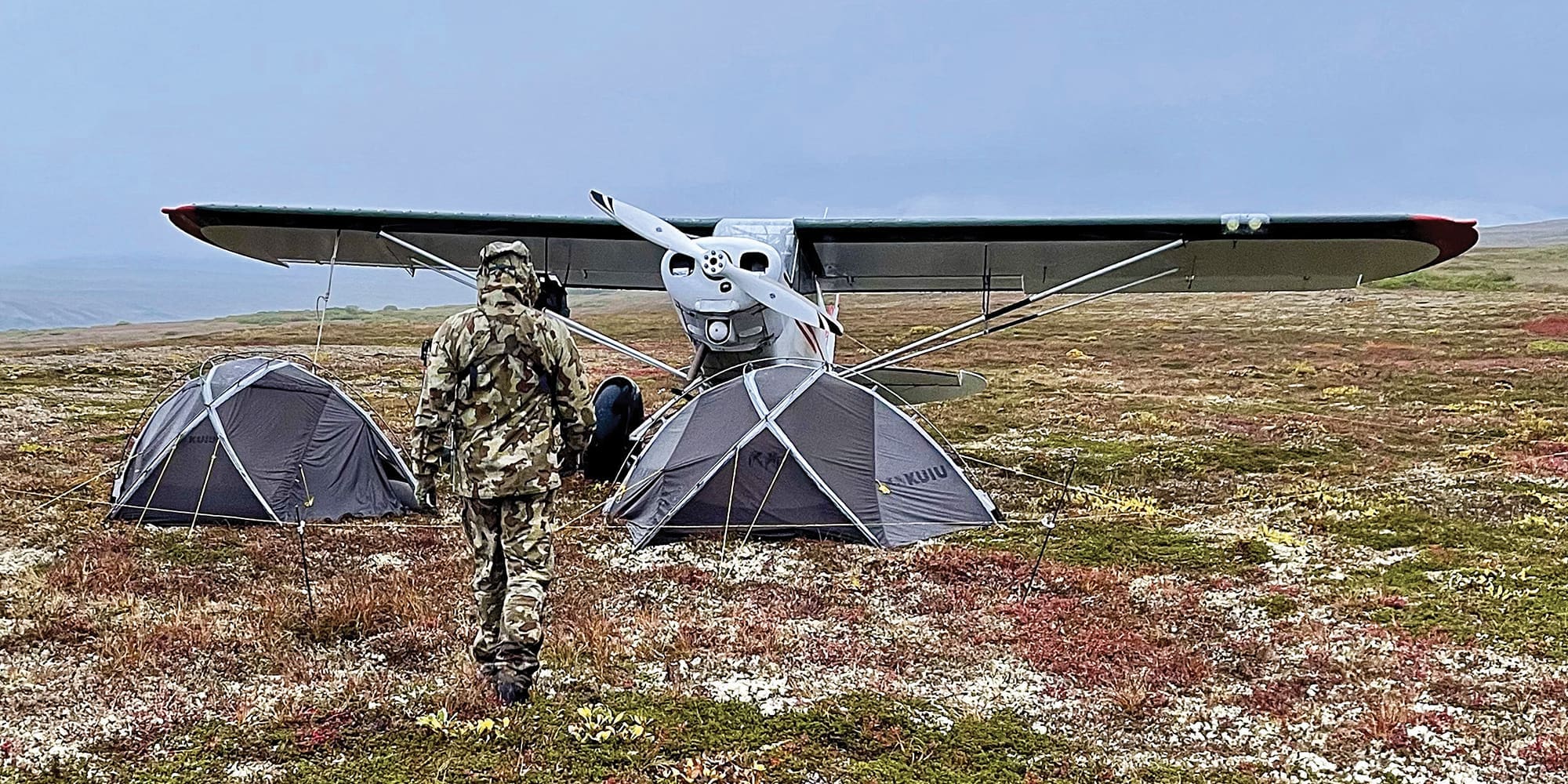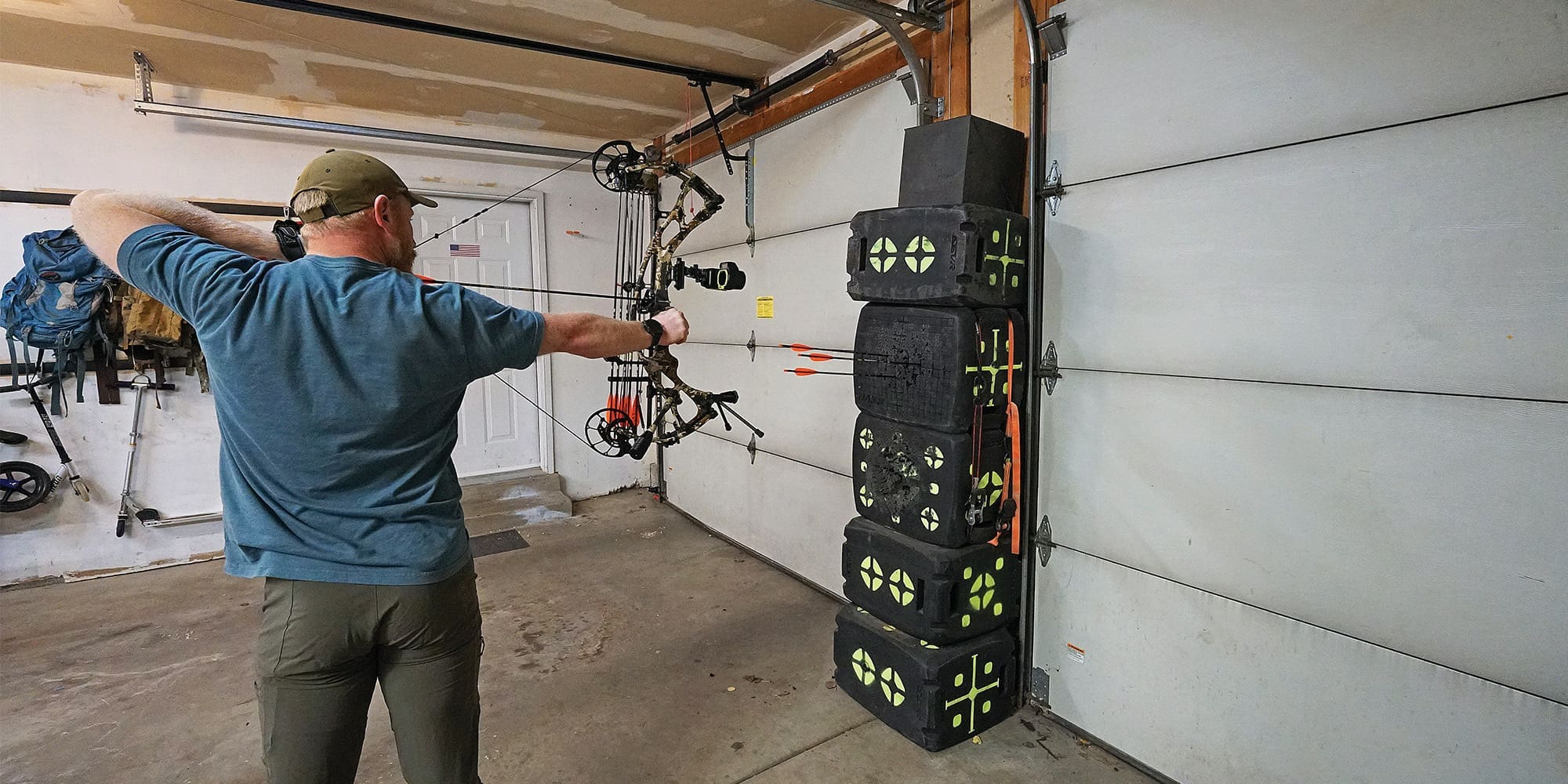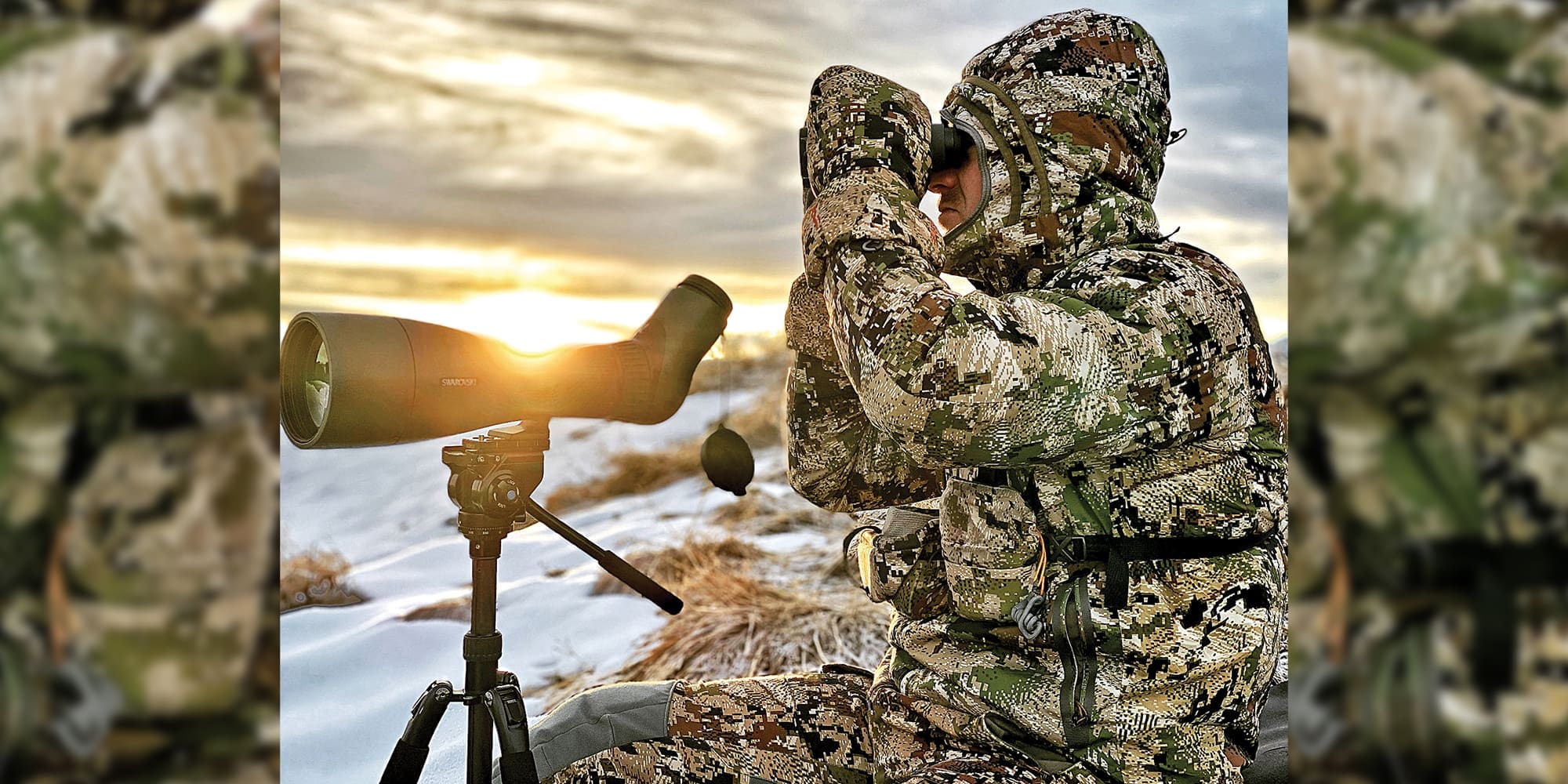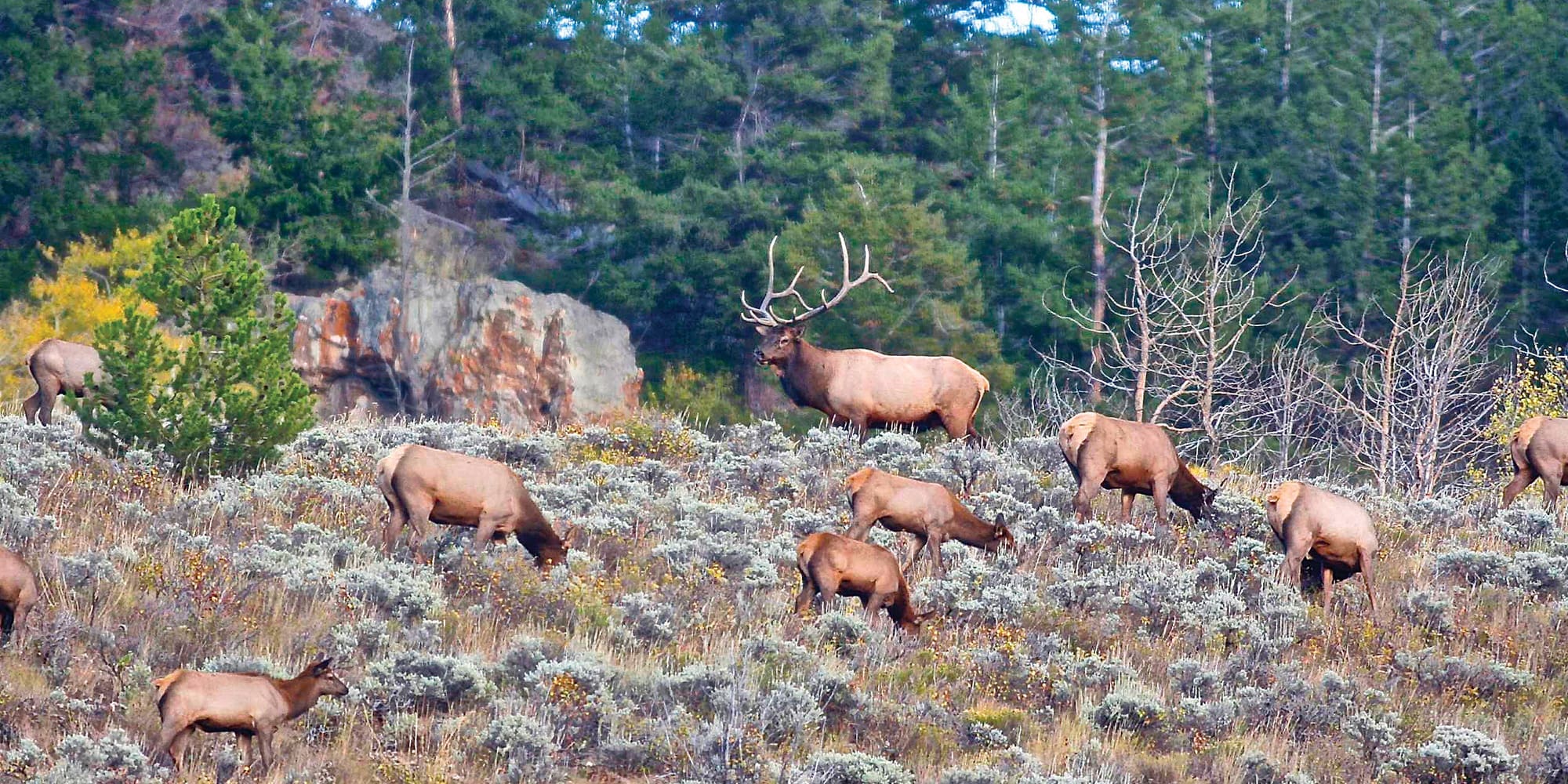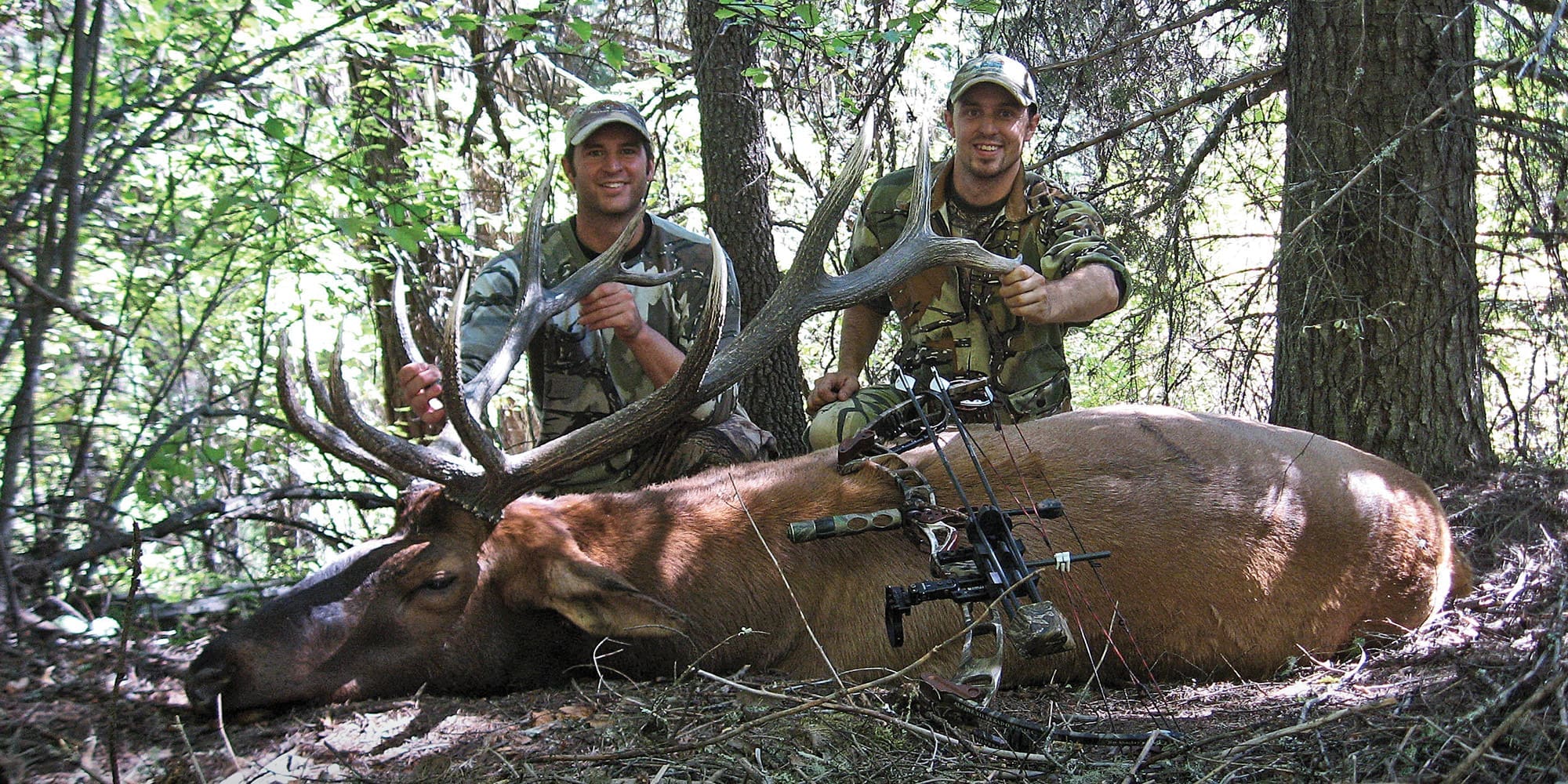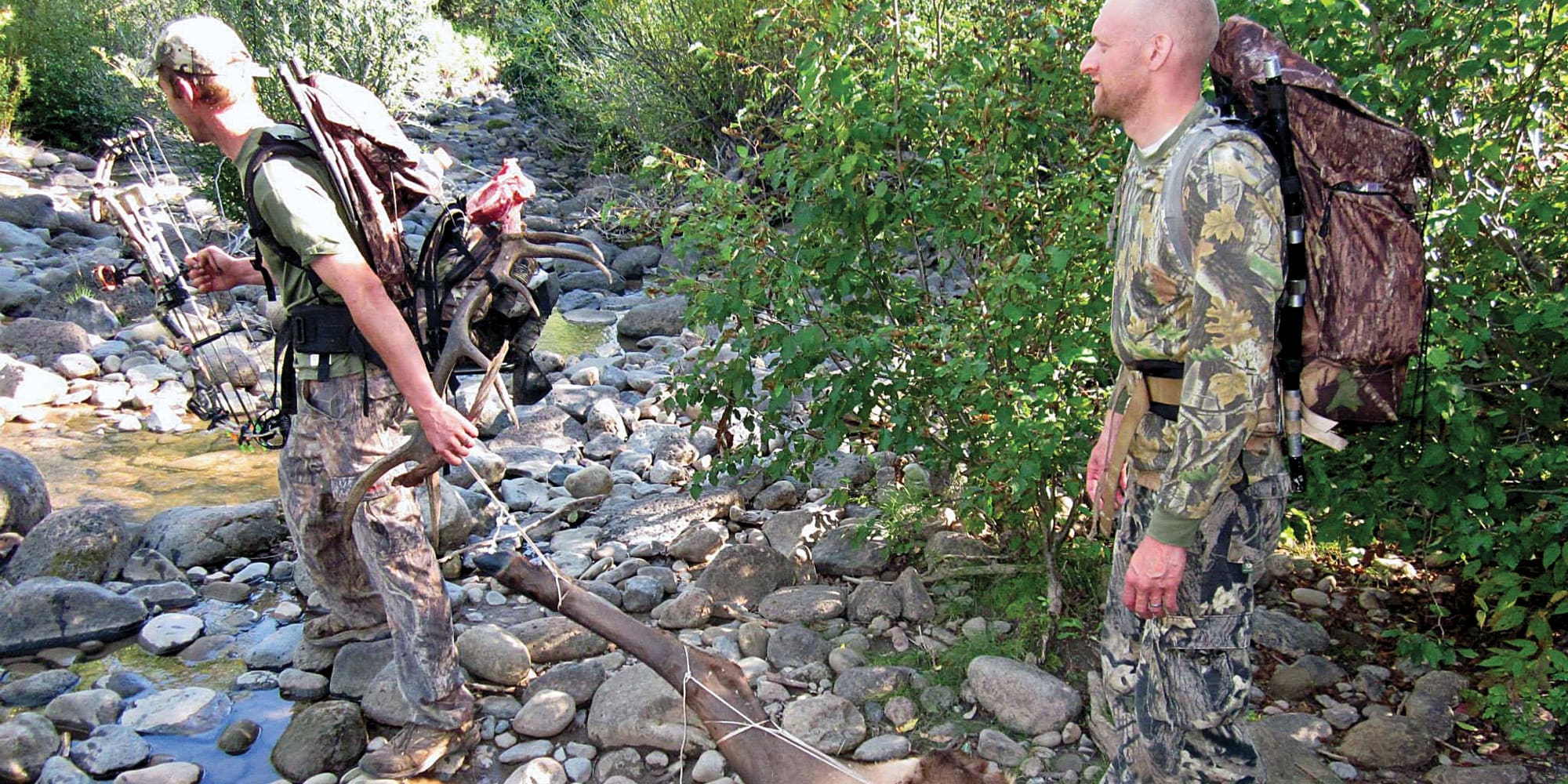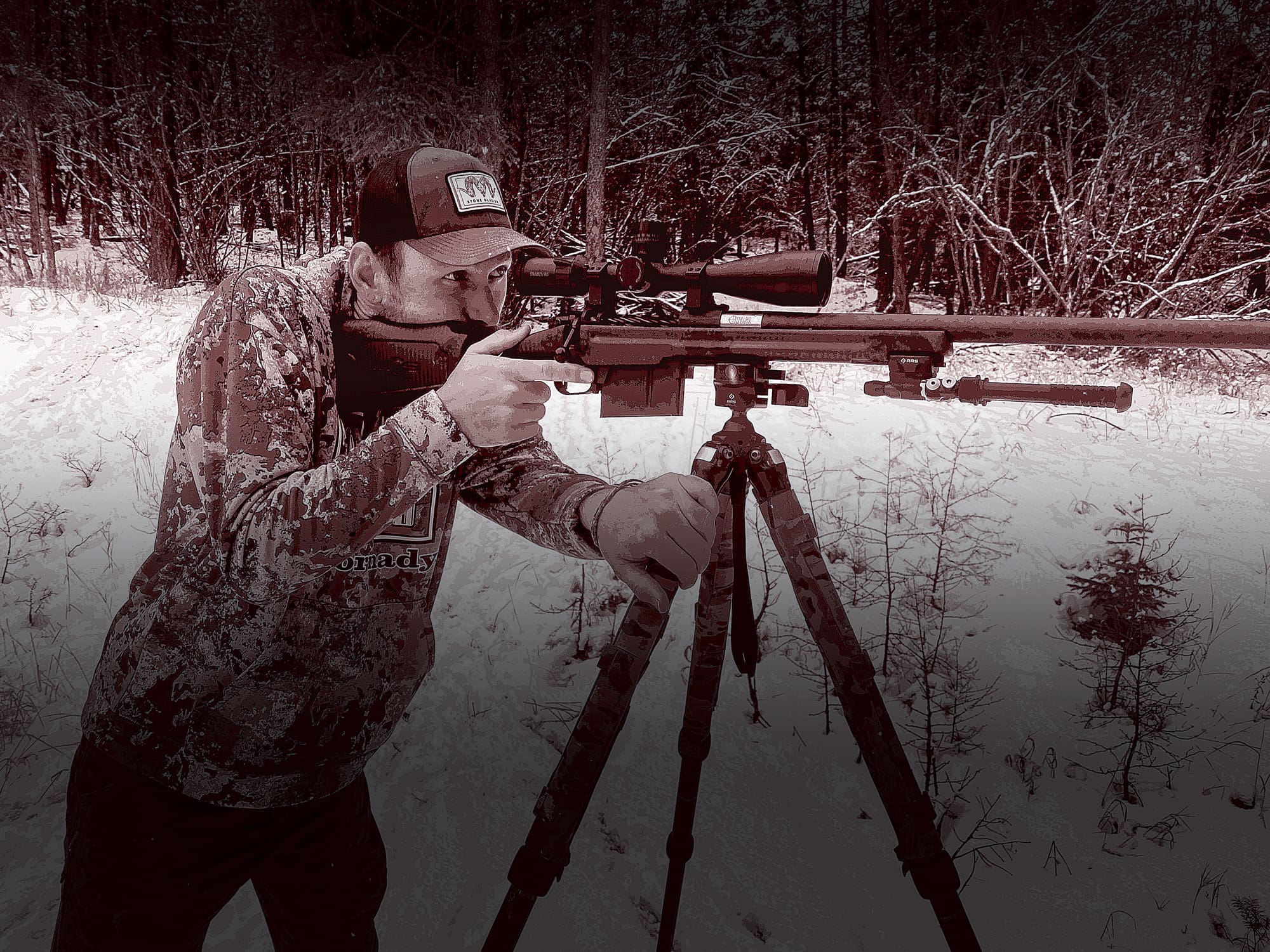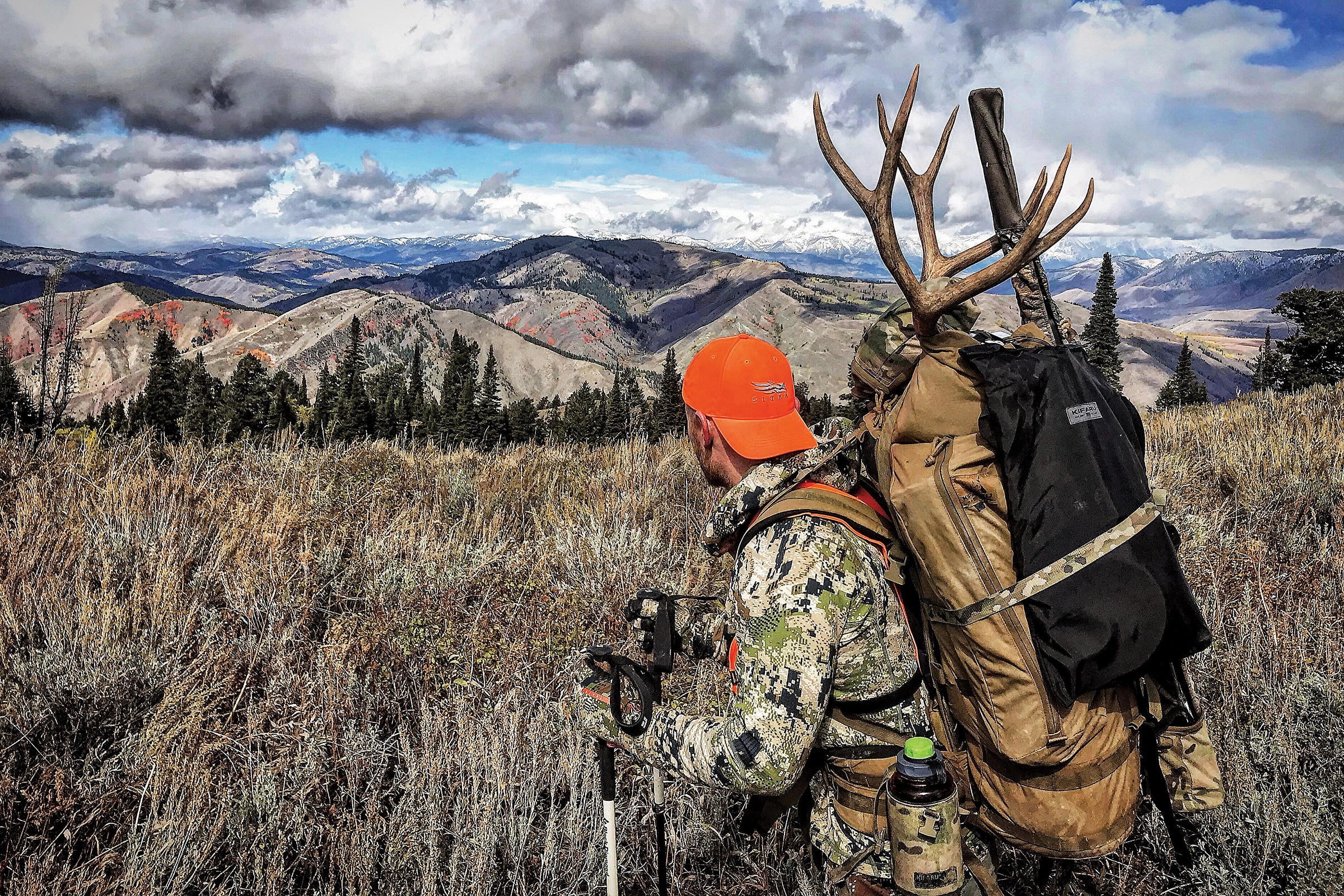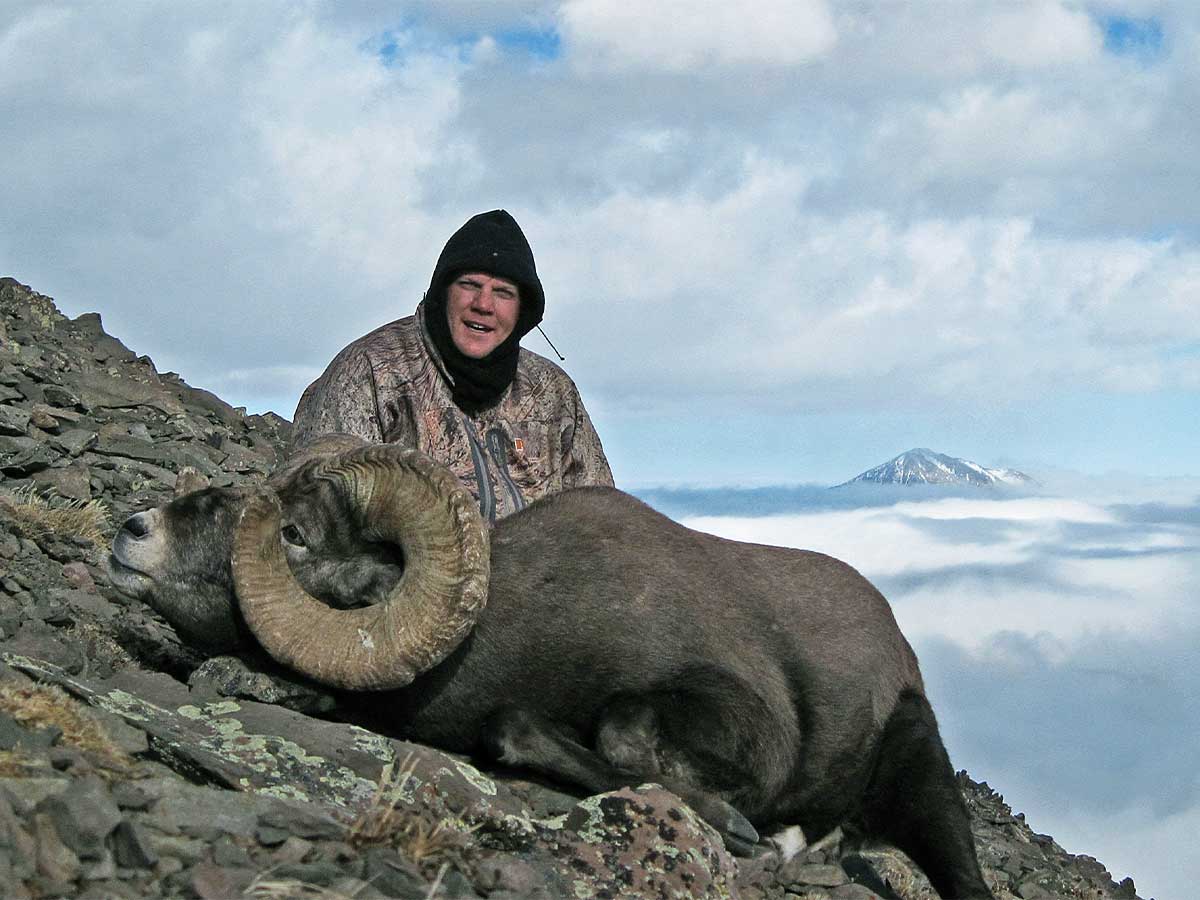
NOTICE: Certain links on this post may earn a commission for Western Hunter Magazine from Amazon or our other affiliate partners when you make a purchase. Thank you for your support.
Tips for Preventing Hypothermia
I had gotten myself into a predicament. I was alone at just over 13,000 feet on December 2, hurriedly skinning my bighorn ram that I had taken the afternoon before. The wind was blowing a steady 20-30 mph with higher gusts as clouds raced overhead with a foggy temperature inversion below. The edge of a winter storm front was just northwest of my location and I needed to get off the mountain before dark. Staying high was not an option for that night as I didn't want to succumb to hypothermia.
I had stabbed myself in the calf skinning a frozen sheep leg and felt wetness inside my Koflach mountaineering boots. I was tired, hungry, and cold and had a long hike back.
The night before, I had crossed a steep snowfield on the southeast face of the peak, kicking footholds into the wind-packed snow. I knew the danger in attempting to cross the snowfield again instead of hiking up and around on solid rock ground, but my fatigue and possibly mild hypothermia led me to make the decision to cross it again.
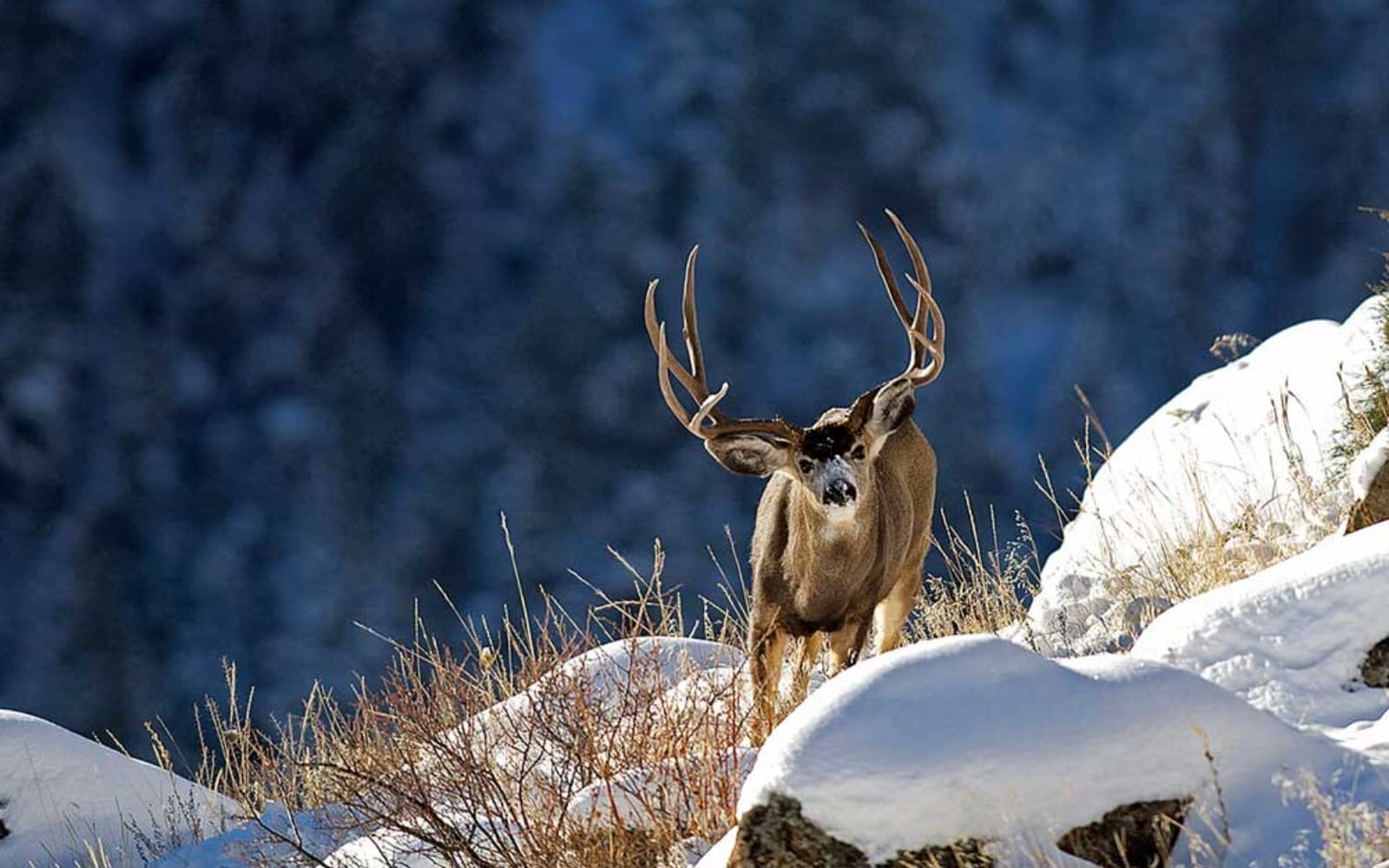
I stepped in my same tracks from less than 24 hours before, knowing full well that a fall or misstep would lead to a rocketing slide down a 50-degree decline into a broken up boulder field. Luckily that didn’t happen.
I got back to my truck where my good friend Bobby Hebert sat waiting, worried, and right on the verge of making the call to emergency services. I was pretty quiet on the drive back to our motel room and slow to warm up. Fatigue was overwhelming, and when I stripped my clothes off to take a warm shower, the stab wound in my calf was pulsing blood. It was light, but enough to completely soak the inside of my boot, sock, and long underwear bottoms.
An ER trip for the small arterial bleed was probably in order, but both Bobby and I are firefighter-paramedics, so I elected to go with direct pressure rather than an hour-plus drive to the closest hospital. An hour of elevation and direct pressure eventually stopped the bleed.
I know what many of you are thinking, and let me acknowledge firsthand that the risk/reward analysis that I went through shows that I put myself at enough risk that the results could have been tragic. I also realize that when you do put yourself in a situation requiring rescue and help that first responders and search and rescue personnel will also be exposed to risk and that responsibility is a heavy burden to bear. Fortunately, I escaped the day with the ability to reflect on it a few years later. One of the greatest benefits from this is the ability to share it and hopefully keep someone else out of harm’s way in the future.
Types of Heat Loss
Being in the outdoors involves risk on many levels, but we stack the odds in our favor through preparedness, conditioning, and experience. One of the biggest dangers we face in the outdoors is hypothermia, and to a lesser degree, hyperthermia. Our ability to manage our safety in regard to thermal regulation is extremely important because deviating from normal body temperature exacerbates every other weakness, vulnerability, and condition that we have. It also has a tremendous effect on our ability to think clearly and make rational decisions.
I’ve been a firefighter/paramedic for 22 years and have spent all my adult life in the mountains of Colorado hiking, hunting, backpacking, snowshoeing, snowmobiling, and more. I’m exposed to this subject often, yet I still succumbed to what I believe were the effects of hypothermia and exhaustion, and I took unnecessary risks.
Hypothermia is more than simply being cold. It’s a physiological condition the body experiences once it drops below the normal temperature of 98.6°F. Hypothermia can set in when the body’s core temperature drops just a couple of degrees. Between 92-96°F, the body experiences moderate hypothermia, and below 92°F becomes the danger zone of severe hypothermia, which can become irreversible and fatal below 86°F.
Hypothermia begins to set in anytime the body is losing more heat than it’s producing and maintaining. This takes place through convection, evaporation, and direct conduction.
- Convection is the cooling effect wind has on your body by the rapid movement of cooler air over it. Basically, it’s the same principle as how you use a house fan to cool off.
- Evaporation cooling takes place when there is moisture on your skin’s surface. When the sweat or rain moisture evaporates from the liquid to the state of a gas or vapor, heat is drawn from the body to help facilitate this.
- Direct conduction is the simplest and most dangerous form of heat loss and is probably the kind of heat loss that most affects hunters in a dangerous situation the fastest. Direct immersion in cold water, bare skin on snow, and sitting on a cold rock are good examples.
Quite often when talking about the effects of severe weather on the human body, the term “wind chill factor” is bantered about. Weathermen read dramatically cold numbers for shock impact, but what does it really mean to hunters? Simply put, the impact of cold air on our skin worsens as the velocity of wind increases. The faster the cold air moves across our bodies, the faster it steals heat away.
The easiest way to combat it is a wind-breaking jacket (like those in our clothing review in this very issue – look for those with the densest weaves and/or specific wind-breaking membranes) and similar pants for an outer layer. Also, taking cover in natural shelters such as overhangs and behind brush and trees can keep some of the bone-chilling winds at bay to allow you to stay warm longer when glassing or stand hunting.
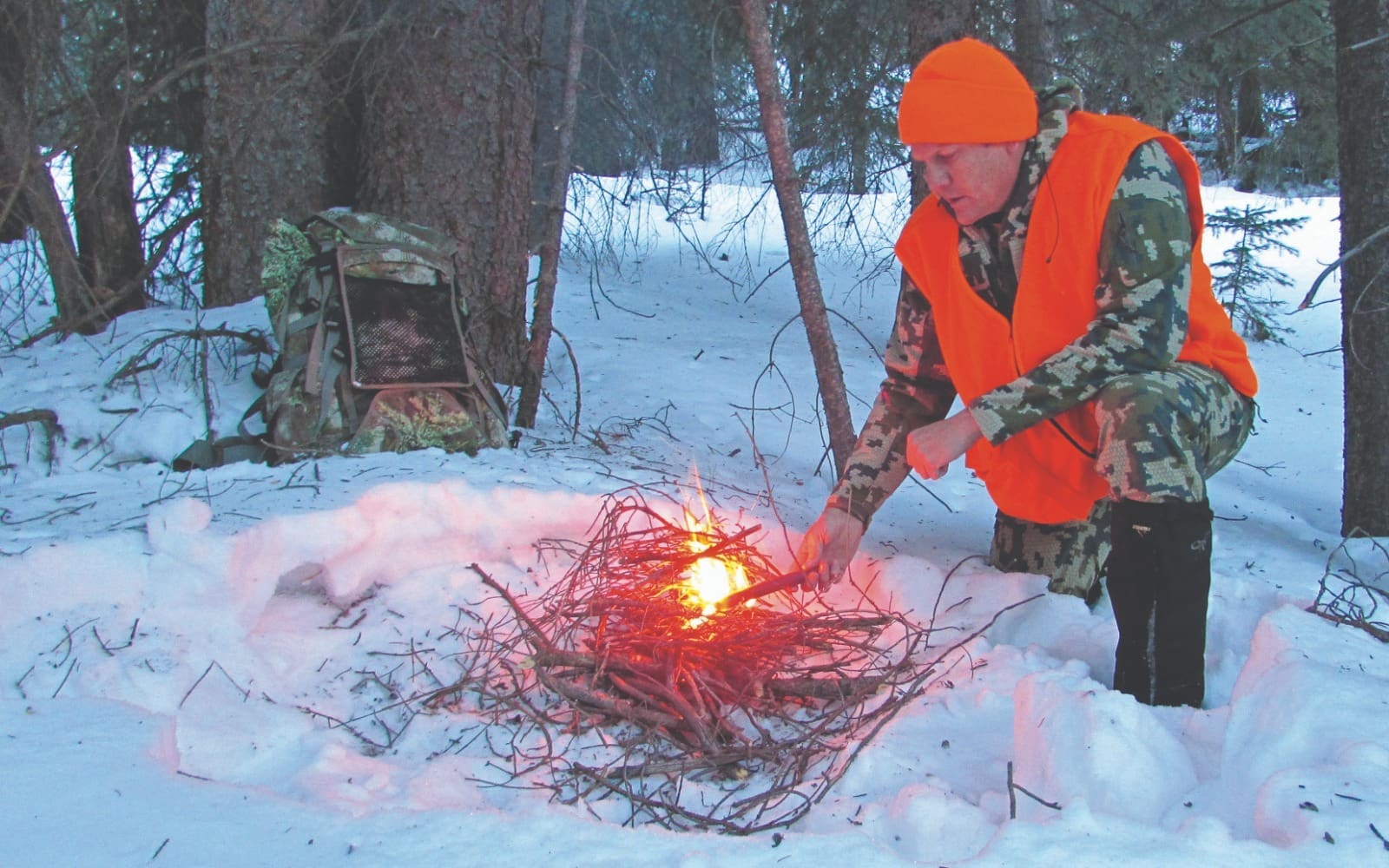
Mind and Body
Western hunters are exposed to all these factors in varying degrees at different times of the year, different elevations, and different weather. One important factor to remember in regard to the effect of cold and hypothermia on the human body is that it can exacerbate all other weaknesses and medical conditions we have. We all carry chinks in our armor from injuries and lifestyle, and cold can make those worse. But most interesting, and probably the most dangerous effect of hypothermia is how it affects our mind, our thinking, and our ability to make decisions.
As the human body cools, blood is pulled from the extremities in order to protect the vital organs and brain function. This only works so well (and with great cost). The colder we get, the less ability we have to consciously override the effects of the onset of hypothermia. This alarming condition isn’t a late stage of hypothermia but occurs in moderate hypothermia when the human body’s core temperature has dropped just 2-4 degrees.
During this time, if we are exposed to choices or conditions requiring sound thought and decision-making, we can find ourselves getting into trouble. The mind can fall back onto simpler thought processes. This is where those who have experience rely on that and their training to make it through, while others revert to an almost helpless state with fear and panic taking over.
If you find yourself in such a state, your ability to recognize it, stay calm, and make good choices may be the difference between life and death.
In addition to the effects of hypothermia on the brain, you have effects on the body. As your body cools and blood flow is decreased to your extremities, you have decreased function. Cold hands have difficulty with very simple tasks, such as striking matches or working a fire starter. Your lower legs are desensitized and weaker and your tendency to trip and fall increases as your body cools. Your overall vulnerability increases as temperature decreases.
Symptoms of Hypothermia
Mild Hypothermia
- The body is slowing down peripheral circulation, resulting in cold and numb feet, hands, ears, and nose.
- The body experiences mild involuntary shivering.
Moderate Hypothermia
- Foggy or dazed mental state
- Behavior changes, coupled with poor or questionable decision-making.
- Slurred speech.
- Loss of fine motor function in extremities, such as the inability to operate a jacket zipper.
- Uncontrollable shivering.
Severe Hypothermia
- Slowing pulse.
- Pale or chalky colored skin.
- Dilated pupils.
- Shivering stops and starts.
- The tendency to curl up on an involuntary basis.
- Movement, flexibility, and coordination are greatly reduced.
Fatal Hypothermia
- Loss of consciousness.
- Respirations become shallow and erratic.
- Cardiac anomalies occur, which can result in fatal arrhythmia.
A Real Example
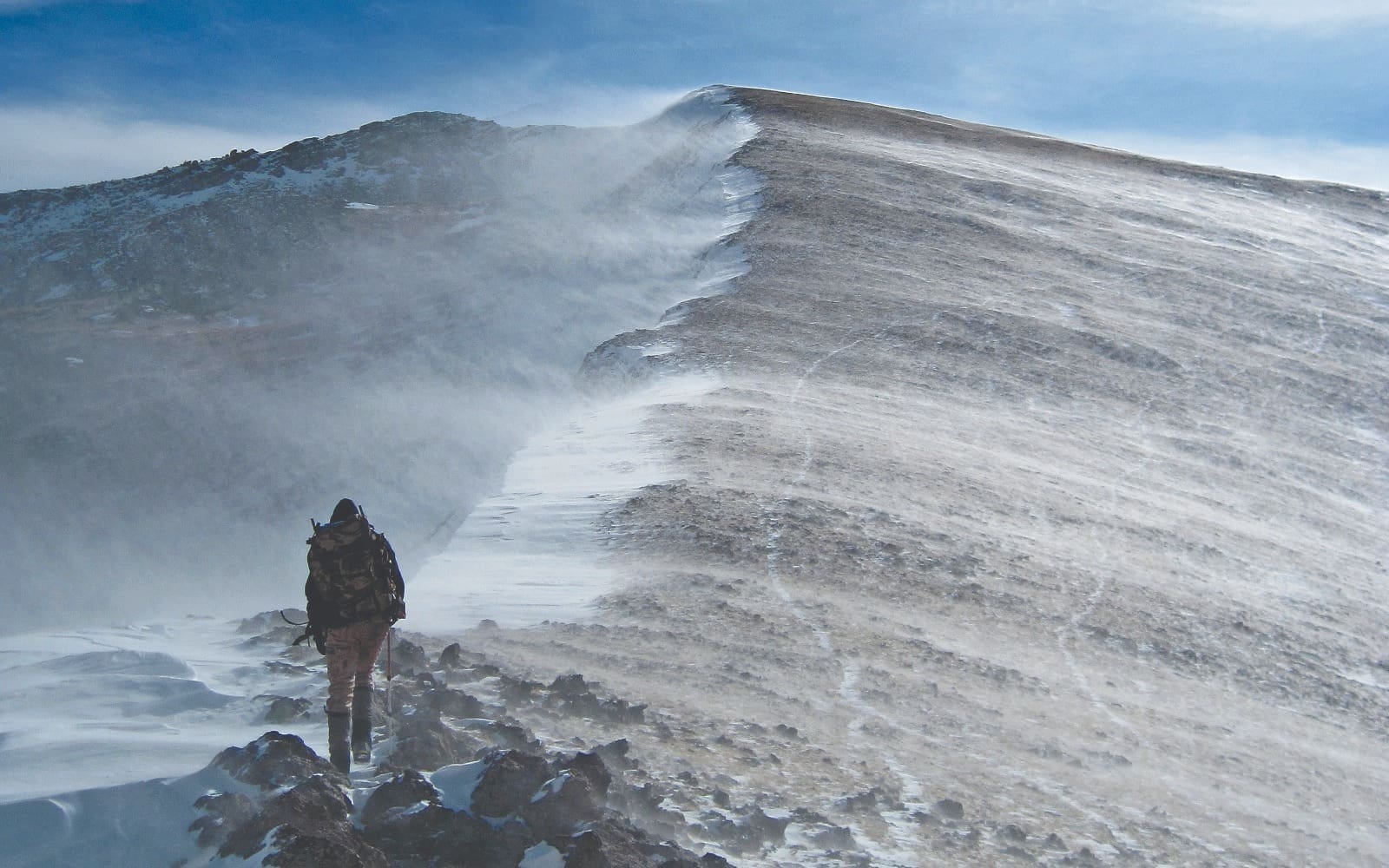
When you combine the effects of cold and altitude, as I experienced, you really increase your exposure. A hypoxic, oxygen-starved brain and a hypothermic body can be a deadly mix.
This is what happened during the subsequent retrieval of my ram off the top of the Culebra Mountains that December. I had a friend of a friend along to help two others and me with the packing, and I felt pretty good about it since he was a younger, very stout man, who seemed pretty tough. Again, the wind and weather were absolutely ferocious and temperatures dangerously low.
We started out in good spirits and with lots of energy, but the wind increased in velocity throughout the day. By the time we got to the ram, the wind was howling a steady 50 mph, with gusts to 70-80.
My partner for the day had gotten cold and was showing some effects of possibly succumbing to hypothermia. He wasn’t talking, and at one point, he just sat down and said, “I don’t think we’re going to make it out of here.”
He asked me if we were going to die. It was a “life-coach” moment for me and I knew there was no way to survive on that mountain, so instead of retracing our steps in the alpine, we dropped straight down off the 13,000-foot ridgeline into the trees at 11,600’. This gained us cover, and if need be, we could start a fire with a road flare I always carry in my pack. This would give us a much better chance of weathering the coming storm.
Once we got down out of the wind, we sat down to eat some oatmeal cookies and then started hiking again. The hiking, food for energy, and lower wind exposure seemed to warm him up, and he started coming out of his hypothermic state.
At this point, he was pretty spooked, and when we topped a ridge and saw my friends, Bobby and Dave, he took off running toward them. It was a close call for someone inexperienced in those conditions and who was almost completely overwhelmed by them. I consider it very fortunate to have escaped the day with just a harrowing tale to recall.
What You Wear Matters
The best way to combat hypothermia is to not become cold in the first place. For Western hunters, this is easier said than done. We have and will continue to hit the mountain in less than favorable weather and push ourselves to our physical and logistical limits. But we do have the knowledge and an unprecedented level of quality gear that can make a huge difference.
You’ve seen and heard Western Hunter magazine staff expound on the virtues of high-quality, high-performance clothing, such as some of those featured in our recent clothing reviews. This stuff isn’t simply a trendy outfit of athletically cut camo. Some of the better companies’ systems are based on outdoor and mountaineering gear designed to be layered on and off depending on your condition, activity level, and the elements.
Start with a good merino wool base layer designed to wick moisture away, but also allowing some heat retention when moist. Then, have the appropriate insulation layers - hopefully, a high-quality treated down or PrimaLoft layer, and possibly a fleece or whatever you feel appropriate depending on how cold it is. Then, your outerwear should be picked based on expected temperatures, conditions, and weather. Finally, there is a rain and wind shell to be worn on the outside performing the obvious.
Utilizing a quality clothing gear system can allow you to keep hypothermia at bay, and in turn increase your quality of experience and safety when hunting in the mountains of the West, Canada, and Alaska. Hunting in miserable and inclement weather in harsh topography requires physical ability and a certain degree of mental toughness. It’s a heck of a lot easier to be mentally tough when you aren’t suffering and miserable.
When You REALLY Need a Fire
There will likely come a time in the outdoors when you really need a fire - not just fire for comfort or a morale booster, but a serious "Jeremiah Johnson falling in a frozen creek" situation where your life or someone else's might depend on it. I'm not talking Boy Scout merit badge techniques here, but a failsafe fire-starter that’s simple and works when you need it.
Picture yourself with cold wet hands that are so numb you can barely feel them. Your dexterity and coordination are gone and conditions are worsening. Chances are it’s wet, too. You probably don't want to be messing with a magnesium striker and digging inside of a dead tree trying to find tinder that might take a spark. You want it simple and you want it now.
I’ve suggested road flare, and it’s something that I carry on cold, late-season hunts or when snowmobiling the backcountry in the winter, but some of you may not want to carry that. A great alternative that will get a fire going is a simple Bic lighter and a tube of fire-starter paste, such as Coghlan's Fire Paste. I would recommend two lighters, a small tube of fire paste, and a small weatherproof container of strike-anywhere matches. Test your skills and practice like you play.



